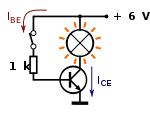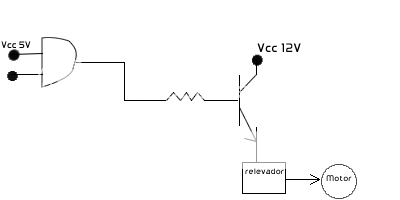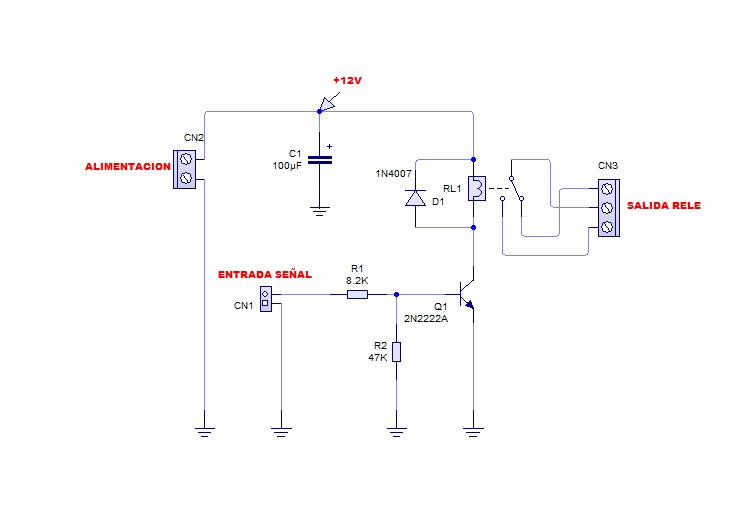Transistor as a switch


BJT used as an electronic switch, in grounded-emitter configuration.
Transistors are commonly used as electronic switches, both for high-power applications such as
switched-mode power supplies and for low-power applications such as
logic gates.
In a grounded-emitter transistor circuit, such as the light-switch circuit shown, as the base voltage rises, the base and collector current rise exponentially. The collector voltage drops because of the collector load resistance (in this example, the resistance of the light bulb). If the collector voltage were zero, the collector current would be limited only by the light bulb resistance and the supply voltage. The transistor is then said to be
saturated - it will have a very small voltage from collector to emitter. Providing sufficient base drive current is a key problem in the use of bipolar transistors as switches. The transistor provides current gain, allowing a relatively large current in the collector to be switched by a much smaller current into the base terminal. The ratio of these currents varies depending on the type of transistor, and even for a particular type, varies depending on the collector current. In the example light-switch circuit shown, the resistor is chosen to provide enough base current to ensure the transistor will be saturated.
In any switching circuit, values of input voltage would be chosen such that the output is either completely off,[SUP]
[21][/SUP] or completely on. The transistor is acting as a switch, and this type of operation is common in
digital circuits where only "on" and "off" values are relevant.




